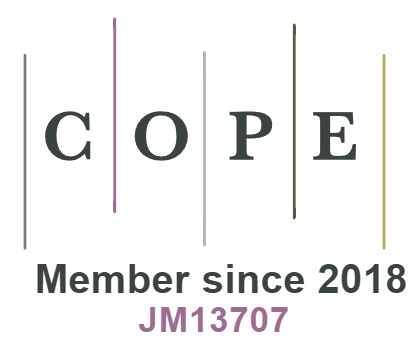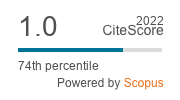On Theses Without Iterated Modalities of Modal Logics Between C1 and S5. Part 1
DOI:
https://doi.org/10.18778/0138-0680.46.1.2.09Keywords:
first-degree theses of modal logics, theses without iterated modalities, Pollack’s theory of Basic Modal Logic, basic theories for modal logics between C1 and S5Abstract
This is the first, out of two papers, in which we identify all logics between C1 and S5 having the same theses without iterated modalities. All these logics canbe divided into certain groups. Each such group depends only on which of thefollowing formulas are theses of all logics from this group: (N), (T), (D), ⌜(T)∨ ☐q⌝,and for any n > 0 a formula ⌜(T) ∨ (altn)⌝, where (T) has not the atom ‘q’, and(T) and (altn) have no common atom. We generalize Pollack’s result from [12],where he proved that all modal logics between S1 and S5 have the same theseswhich does not involve iterated modalities (i.e., the same first-degree theses).
References
[1] B. F. Chellas, Modal Logic. An Introduction, Cambridge University Press: Cambridge, 1980.
Google Scholar
[2] B. F. Chellas and K. Segerberg, Modal logics in the vicinty of S1, Notre Dame Journal of Formal Logic 37 (1) (1996), pp. 1–24.
Google Scholar
[3] R. A. Girle, S1 ≠ S0.9 , Notre Dame Journal of Formal Logic 16 (1975), pp. 339–344.
Google Scholar
[4] G. E. Hughes and M. J. Cresswell, A New Introduction to Modal Logic, Routledge: London and New York, 1996.
Google Scholar
[5] S. A. Kripke, Semantical analisis of modal logic. II: Non-normal modal propositional calculi, [in:] J. W. Addison, L. Henkin, and A. Tarski (eds.), The Theory of Models. Proc. of the 1963 International Symposium at Berkeley, pp. 206–220, North Holland: Amsterdem, 1965.
Google Scholar
[6] E. J. Lemmon, New fundations for Lewis modal systems, The Journal of Symbolic Logic 22 (2) (1957), pp. 176–186. DOI: 10.2307/2964179
Google Scholar
[7] E. J. Lemmon, Algebraic semantics for modal logics I, The Journal of Symbolic Logic 31 (1) (1966), pp. 46–65. DOI: 10.2307/2270619
Google Scholar
[8] E. J. Lemmon, in collaboration with D. Scott, „Lemmon Notes”: An Introduction to Modal Logic, edited by K. Segerberg, no. 11 in the American Philosophical Quarterly Monograph Series, Basil Blackwell: Oxford, 1977.
Google Scholar
[9] A. Pietruszczak, Simplified Kripke style semantics for some very weak modal logics, Logic and Logical Philosophy 18 (3–4) (2010), pp. 271–296. DOI: 10.12775/LLP.2009.013
Google Scholar
[10] A. Pietruszczak, Semantical investigations on some weak modal logics. Part I, Bulletin of the Section of Logic 41 (1/2) (2012), pp. 33–50.
Google Scholar
[11] A. Pietruszczak, Semantical investigations on some weak modal logics. Part II, Bulletin of the Section of Logic 41 (3/4) (2012), pp. 109–130.
Google Scholar
[12] J. L. Pollack, Basic Modal Logic, The Journal of Symbolic Logic 32 (3) (1967), pp. 355–365. DOI: 10.2307/2270778
Google Scholar
[13] G. Priest, An Introduction to Non-Classical Logic, 2th edition, Cambridge University Press, 2008. DOI: 10.1017/CBO9780511801174
Google Scholar
[14] R. Routley, Decision procedure and semantics for C1, E1 and S0.5◦, Logique et Analyse 44 (1968), pp. 468–471.
Google Scholar
[15] K. Segerberg, An Essay in Classical Modal Logic, vol. I and vol. II, Uppsala, 1971.
Google Scholar
[16] G. Takeuti, Proof Theory, North-Holland: Amsterdam, 1975.
Google Scholar
[17] M. Zakharyaschev, F. Wolter, and A. Chagrov, Advanced modal logic, in D. M. Gabbay and F. Guenthner (eds.), Handbook of Philosophical Logic, 2nd Edition, Volume 3, pp. 83–266. Kluwer Academic Publishers, 2001. DOI: 10.1007/978-94-017-0454-0
Google Scholar
Downloads
Published
How to Cite
Issue
Section
License
Copyright (c) 2017 © Copyright by Authors, Łódź 2017; © Copyright for this edition by Uniwersytet Łódzki, Łódź 2017

This work is licensed under a Creative Commons Attribution-NonCommercial-NoDerivatives 4.0 International License.















